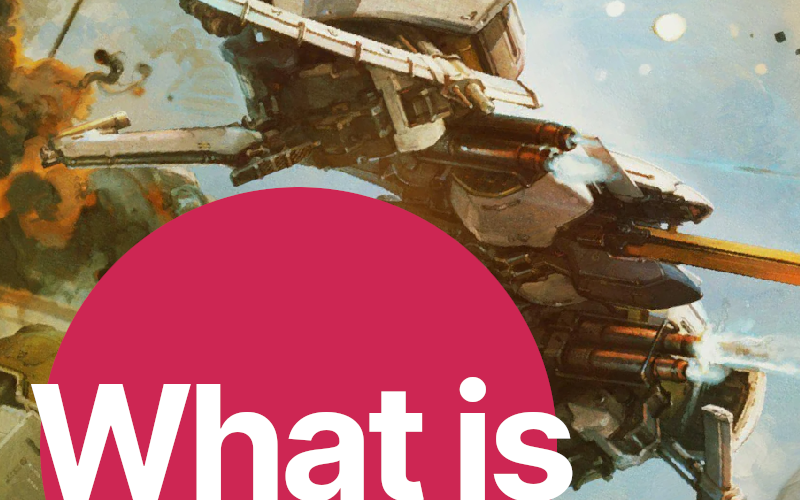A bullet hell is a 2D action game about dodging intricate patterns of bullets and shooting enemies. They have a higher bullet count and slower bullet speed than traditional shmups. Examples are the Dodonpachi and Touhou series.
At first, you might think increasing the number of bullets is just a way to increase the difficulty, but that’s not quite right. Yes, bullet hell games tend to be very difficult, but not more than any shmup subgenre that started in the arcade. Whether it’s Raiden, Ghouls ‘n’ Ghosts, or Mushihimesama, arcade game intensity is high across the board.
So, if it’s not difficulty, what is bullet hell all about?
Bullet hell is a different flavour of shmup
Yes, there are lots of bullets in these games (sometimes hundreds on-screen at once), but they are slower. Also, the player’s ship will have a very small hitbox — sometimes a single pixel and this gives players more opportunity to avoid danger even when the gaps between bullets is very narrow.
Because bullets linger on the screen, they can be used to build up more complex patterns or even mazes. Massive variety is possible just by utilising different shapes, sizes, speeds and colours of bullets.
There is usually a feeling of pressure from all sides in a bullet hell game, resulting in relief and elation for surviving such situations. The player is forced to pay constant attention and move in interesting ways to overcome the challenges presented.
This flavour isn’t for everyone. Arguably the biggest divide in shmups is between bullet hell fans and the fans of “traditional shmups”.
Bullet hell vs traditional shmup examples
Most shmups that you’ve heard of aren’t bullet hell. R-Type, Raiden, Space Invaders, Gradius, Galaga, Thunder Force, Zeroranger — these are all “traditional shmups”.
That means, firstly, that bullets come at you fast, and once you get out of the way they’re usually not an issue any more. Traditional shmups also tend to have more variety in the types of obstacles, so there might be physical walls and traps, or enemies with more varied behaviours.
As arcade technology progressed, developers had more power to add more detailed graphics, more exciting visual effects, and yes, more bullets. Various games and studios pushed the genre along this trajectory in this period (Toaplans Batsugun, Raizing’s Battle Garrega, and Cave’s Donpachi), the game that solidified bullet hell as a new style was Cave’s second game, Dodonpachi, released in 1997.
Why bullet hell?
These games showed how bullets could be interesting because they can become anything. They are like atoms of danger: a fundamental building block of challenge. Instead of walls, you can make walls of bullets, or some other form of compressed play area.
You can create beautiful geometric patterns, or you can create obtuse chaos. You can have direct bullets, homing bullets, bullets from any side of the screen or in the middle of it.
Whatever flavour of 2D dodging you want to throw at the player, you can build it with bullets. To me, this is what bullet hell means: games that understand the versatility of bullets.
Bullet hell communities
Forums
- shmups.system11.org forum
- /r/shmups subreddit
Discord/Chats
- STG Rev. 2020 discord.com/invite/8HxRxuR
- Shmups (Elixir’s server) discord.com/invite/x5FCm9Dh2E
- Shmup Junkies discord.com/invite/yPKzubzKRW
Podcasts
YouTube channels
- Electric Underground by Mark MSX
- Jaimers
- Pearl
Wikis
Non-bullet hell
Bullet Hell vs Bullet Heaven
In 2021 a new genre was created with a familiar name. “Bullet heaven” refers to Vampire Survivors and the imitators spawned by its viral success. Though everyone recognised this label as a reference to “bullet hell”, it led to the questions “What is bullet hell anyway?”
My playtime in Vampire Survivors rocketed out of control in just a week, but as I’ve also devoted more hours than he wants to admit to the shmups of Cave and Zun, I think I’m in a good position to explain the connection.
The boss of a bullet hell game expels a terrifying barrage of bullets at the player, and it is only through sheer skill, concentration, and pattern memorisation that you, the player, can find a narrow route to victory.
But what if, instead of your underpowered player ship, you played as that boss? That the overwhelming firepower belongs to you? That’s what a bullet heaven game can make you feel.
These two genres are fundamentally different. Bullet heaven is a character building genre. There are decisions to make in how you upgrade your character, but there’s very little dodging or aiming, which are the elements that make up the core of any shmup.
Anyway, if I wanted to leave things on a confusing note, I might refer you to the series of bullet hell shmups called Bullet Heaven:
